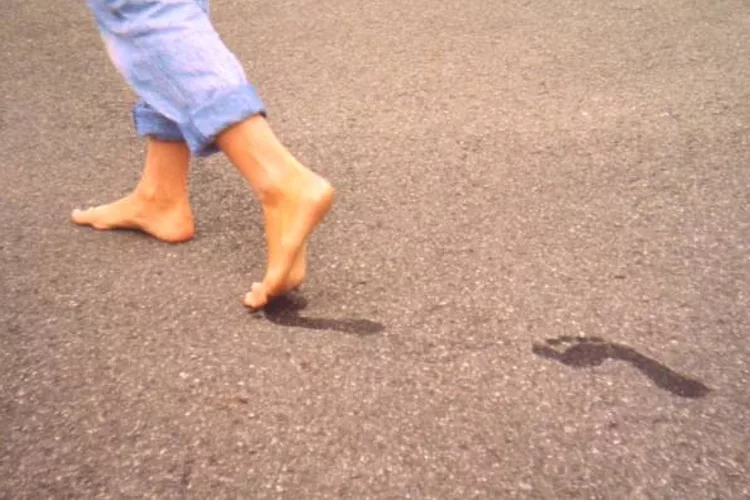Due to gravity alone, your feet are under constant pressure in addition to the demanding bio-mechanical task of carrying you through your daily routine, so it's not surprising that being overweight can lead to foot problems.
Contents

Research has found that having too much body weight may increase your chances of a variety of painful conditions in the feet, including:
You don't have to be extremely obese to run into problems. "Even 25 extra pounds can tip the scales to more problems in the foot and ankle," says James Mahoney, DPM, an associate professor of podiatric surgery at Des Moines University in Iowa.
And for people who are obese, the problems can multiply. Foot problems often develop from the changes in posture caused by carrying too much weight, says Dr. Mahoney. In these cases, the knees tend to come closer together while walking, which shifts the body weight to the insides of the feet. This can be bad for the arches and tendons in the feet and ankle, and lead to hip and back problems.
Being overweight makes you more likely to develop several conditions that can lead to foot pain and other problems, such as:
One problem that arises for people who have weight-related foot conditions is how to get the physical activity that helps in weight loss without causing foot injuries, Mahoney says. If you're overweight and have concerns about hurting your feet, he recommends starting with low-impact aerobic activities, such as water aerobics.
In addition to working with your doctor to make sure your heart and lungs can handle the challenge from a new exercise program, talk to a podiatrist to make sure your shoes are the right size and offer the proper support. Be sure to start exercising gradually, and avoid activities that cause pain.
Weight gain due to pregnancy is hopefully a temporary condition, however many changes occur to the body and, as a result, women who are pregnant are more likely to be affected by certain foot conditions.
The most common foot-related symptom reported during pregnancy is foot pain, which usually results from flattening of the feet. The characteristics of the pain can vary widely, from a dull ache to a sharp or throbbing pain.
This occurs because the body weight of a woman increases significantly during pregnancy and it is distributed around the body differently to other weight gain. Specifically, the arch of the foot can flatten out and the feet roll inwards when walking, referred to as over-pronation. This can cause movement to become very painful and place additional strain on the feet, calves and back. Changes to the relaxin hormone during pregnancy are also thought to be associated with causing these effects.
To reduce the over-protonation and resulting pain, it is important for pregnant women to wear appropriate footwear that supports the arch of the foot. Orthotics that are designed to correct flattening of the feet can also be helpful in some cases.
Swelling of the feet, also known as edema, usually presents in the second or third trimester of the pregnancy. This occurs as a result of the increased blood volume and blood pressure, which leads to water retention and swelling in the legs and feet.
To reduce the swelling, it is important to keep moving regularly to move the circulation of blood and stop the fluid from pooling in the legs and feet. Taking short breaks to walk around during long periods of sitting can be helpful, in addition to raising the feet on a stool when sitting. Staying hydrated and reducing salt intake can also aid in reducing blood volume and reducing edema.
Ingrown toenails are more common in pregnant women, due to the changes in the size, shape and positioning of the foot. The nail is more likely to be pushed into the surrounding skin with tight-fitting shoes or socks, and it can be difficult to trim the toes correctly without help.
Regular salt-water baths can help to relieve the pain and the softened skin can gently pushed back and away from the nail to improve the condition.
Some women who are pregnant also experience hot or burning sensations in their feet, which result from hormonal changes that cause an increase in body temperature. These sensations can be heightened when the woman is fatigued and, in some cases, may inhibit sleep.
Cracked heels are also a common complaint, which is caused by changes in weight and posture associated with pregnancy. The heels tend to expand, leading to cracks if the skin becomes too dry.
There are a number of treatment techniques that can help to reduce the symptoms associated with foot conditions in pregnancy. These include:
Over-pronation of the feet can be managed by opting for appropriate footwear and the use of orthotics. Shoes should be comfortable with extra support and shock absorption, and orthotics can give additional support to the arch and heel of the foot to correct the positioning. A podiatrist can help in the process to examine the foot positioning and make recommendations as to the most appropriate orthotic for the situation.
Visit sources at: https://www.everydayhealth.com/foot-health/weight-loss-and-foot-health.aspx
https://www.news-medical.net/health/Foot-Conditions-and-Pregnancy.aspx
 |
 |
 |
 |
Great Ones for You